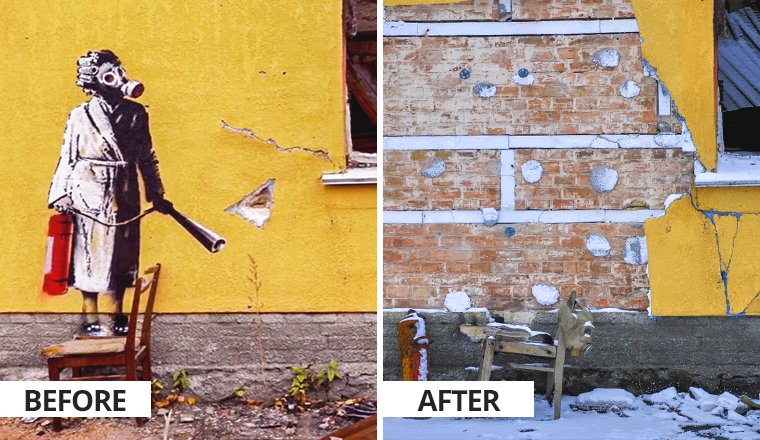“People might think that, as a Bansky fan, I just wanted to hang one of his paintings in my house,” Dovhiy, a member of Extinction Rebellion Ukraine, says.
“But I have a defence: what I’ve been doing for the last nine months, both as a fixer for the Associated Press and as a volunteer. If you need someone to speak for me, ask the Azov Kyiv special operations units or Ukrainian army’s 14th Brigade, they’ll have something to say.”
He decided he would make a documentary on the whole process with the help of several friends – to help prove the mural’s authenticity – and told everyone he was taking personal responsibility for the process.
“Any person who understands street art will agree that the dismantling of graffiti is also an artistic event,” Dovhiy says. “But I wouldn’t have sold it for a thousand euros,” he says, adding that he expected to buy about 40 trucks for the Ukrainian military thanks to the sale.
Officials in Hostomel declared the Banksy graffiti to be a protected cultural object of the town a week after the artist confirmed it was his in November, and suggested that local residents would choose to either place the murals on rebuilt houses, or place them in a memorial to the victims of Russia’s war.
Anna Shovkun, who lives in a house neighbouring the one where Banksy painted his mural, said residents of the town discussed this proposal in a chat on Viber, a messaging platform.


Comments
We encourage anyone to comment, please consult the oD commenting guidelines if you have any questions.